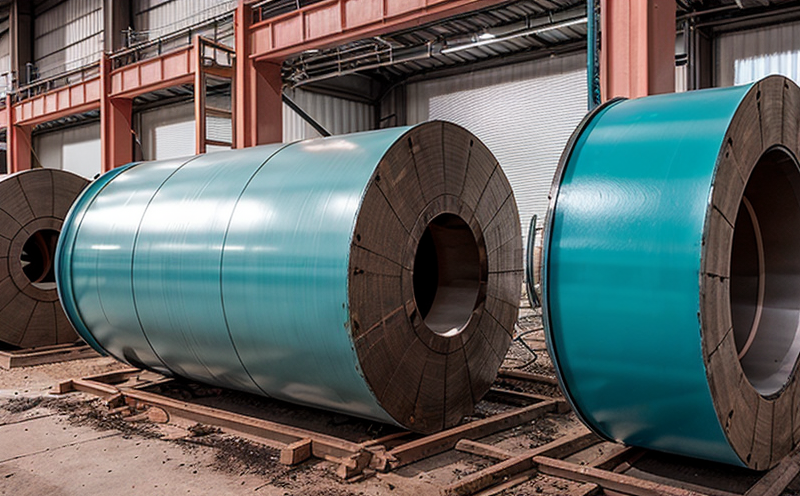DIN 53167 Water Resistance Durability Testing
The DIN 53167 standard is a crucial part of industrial manufacturing and processing, specifically addressing the water resistance and durability testing requirements. This test evaluates materials' ability to withstand immersion in water for prolonged periods, ensuring they maintain their integrity under harsh environmental conditions.
Material selection in industrial applications often involves a balance between performance and cost. DIN 53167 ensures that products are not only durable but also capable of withstanding the rigors of long-term use in challenging environments such as coastal areas, offshore facilities, and other high-risk locations where water exposure is frequent.
Testing according to DIN 53167 involves several steps. Initially, specimens are prepared by cutting them into specific dimensions relevant to their intended use in industrial manufacturing processes. The test setup includes a chamber that can hold the specimens for immersion testing. Water is then introduced at controlled temperatures and pressures to simulate real-world conditions.
Testing duration varies depending on the material being evaluated, but it typically ranges from 72 hours up to several weeks. This allows manufacturers to assess how well their products will perform over extended periods of exposure to water. The test also evaluates the integrity of coatings and finishes used in industrial components like piping systems, tanks, and machinery.
After testing, specimens are removed from the chamber, dried, and inspected for any signs of degradation or failure. This inspection process is critical as it identifies potential weaknesses early in the product lifecycle, allowing manufacturers to address these issues before products reach end-users.
| Material Type | Recommended Testing Duration (hours) |
|---|---|
| Aluminum Alloys | 168–252 hours |
| Steel Alloys | 72–96 hours |
| Polymer Composites | 120–144 hours |
Industry Applications
- Critical infrastructure like offshore oil and gas platforms
- Water treatment plants requiring robust materials for corrosion resistance
- Aerospace components exposed to high humidity environments
- Marine vessels that must operate in saltwater conditions
| Property | Evaluation Criteria |
|---|---|
| Coating Integrity | Visual inspection for peeling, cracking, or lifting. |
| Mechanical Properties | Tensile strength and elongation measurements after immersion. |
| Dimensional Stability | Comparison of dimensions before and after testing to assess swelling or shrinkage. |
Environmental and Sustainability Contributions
DIN 53167 plays a significant role in promoting sustainability by ensuring that industrial products are designed with durability in mind. By adhering to this standard, manufacturers can contribute to reducing waste and the need for frequent replacements, thereby extending the life cycle of their products. This not only saves on production costs but also reduces environmental impact.
The test results help in identifying materials that are more resistant to corrosion, which is crucial for industries where long-term performance is essential. Such materials can be used in critical areas like pipelines and storage tanks, reducing the risk of leaks or failures that could lead to environmental hazards.
Competitive Advantage and Market Impact
Compliance with DIN 53167 provides a competitive edge for industrial manufacturers by ensuring their products meet stringent quality standards. This can enhance brand reputation and customer confidence, leading to increased market share and better customer relationships.
By demonstrating commitment to sustainability through rigorous testing according to international standards like DIN 53167, companies can attract environmentally conscious consumers who are increasingly prioritizing green practices. This alignment with global trends not only boosts brand image but also opens doors to new markets where regulatory compliance is a key factor.
The ability to provide reliable and durable products supported by robust testing protocols like DIN 53167 can differentiate companies in competitive landscapes, especially in sectors facing stringent environmental regulations. This advantage translates into higher customer satisfaction and loyalty, fostering long-term relationships that benefit both the industry and end-users.





